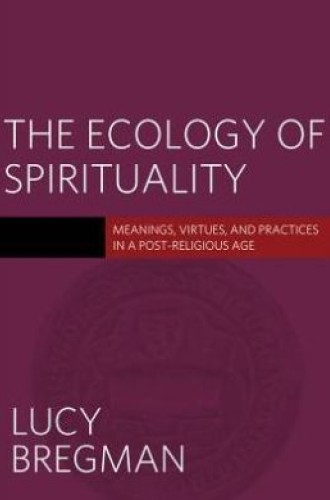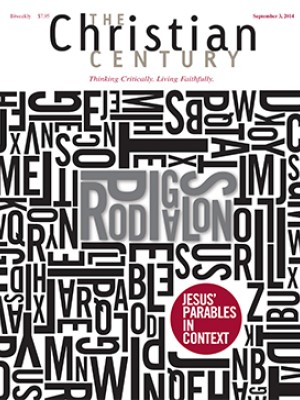The Ecology of Spirituality, by Lucy Bregman
I once walked 500 miles of Spain’s famous Camino de Santiago. Some 200,000 pilgrims now traverse this enormously popular route each year. Only a small fraction go for traditional religious reasons such as prayer, penance, and solitude; far more participate for the physical challenge, as an economical vacation, for a long-distance hike in good company, or for spiritual reasons other than traditional Christian motivations.
As I walked beside, listened to, and shared bandages and meals with seekers from around the world, I was impressed over and over again by how earnestly my companions were searching for deep, authentic ways of living. I came away from the journey less dismissive of folks who label themselves spiritual but not religious. I am convinced that Christians have much to learn from them and that we will remain foggy about our own Good News until we do.
Read our latest issue or browse back issues.
Temple University religion professor Lucy Bregman looks at the rapidly evolving term spirituality and notes that the word is used to suggest many things: “the depth and truth and all-inclusive wholeness of life, our lost and lamented connection to the universe,” “yearning for wholeness,” life orientation, meaning and purpose. It has become an “enormous umbrella-like category believed by many to be intrinsically resistant to definition.” At the same time, traditional religious practices such as meditation and yoga are routinely offered and consumed in ways completely divorced from their original religious structures, becoming “spiritual techniques” or “wisdom technologies.”
These current meanings of spirituality have nothing to do with the spiritual or the spirit, let alone the Holy Spirit, but Bregman does not write them off. She wants to find out what “makes spirituality so appealing.” She recognizes that there is “something positive, something worth discovering, behind all the usages of spirituality today,” but she is also wary of the “enormous fascination and the heady glow,” the “utopian aura,” the tales “of liberation and hope,” and the strange “blend of hopefulness and confusion.”
A standard 1983 definition of spirituality that Bregman cites refers to “those aspects of a person’s . . . faith commitment that concern . . . striving to attain the highest ideal or goal.” This involves decision and deliberation, as well as practicing within a particular tradition. Bregman notes that “living a faith or a commitment requires long-term dedication over time, a set of beliefs about that commitment, and a community and tradition that supports individuals in their aims. All of this occurs in a historical setting that cannot be ignored or severed from the life of faith.”
Today spirituality is often tied to pursuing high ideals but seldom linked to religious traditions or institutions. It now tends to be about a basic “human core” that belongs to everyone, rather than about choice or conscious deliberation. It is “one-poled,” speaking only of “the inner-depth dimensions of human nature” and excluding “explicit references to the cosmos as a whole or anything beyond or outside ourselves.”
Spiritual terminology is now used in surprising settings: health care, workplaces, recreation. Spirituality is seen as a way to address the problems and challenges of these spheres and of our larger culture.
For example, as medical care has become increasingly dehumanized, the role of chaplain has developed in new ways. Though chaplains usually are credentialed by denominations or other religious entities, they are less and less likely to represent particular traditions. In increasingly multicultural settings, religion comes to be seen as “intrusive and unwelcome,” and it is regarded as inappropriate for chaplains to foist commitments and convictions on patients. So chaplains are called on to bring spirituality, which in this case often means basic helping skills of counseling or social work. Here, spirituality is a way to “rehumanize” medical settings.
Bregman is suspicious of how spirituality vocabulary has penetrated the workplace. People do struggle with the meaning of institutions and businesses, but workplace spirituality that promotes greater effectiveness, profitability, and entrepreneurialism seldom asks probing questions. Bregman claims that “workplace spirituality consultants” become “tools” for institutional agendas, aiming to help people settle into work, not necessarily to pursue abundant life.
Because spirituality does not succeed in making work lives more fulfilling, people inject it into a third realm: recreational activities that people hope will “restore our souls,” “enhance our sense of connectedness,” and link to “an order and sense of beauty and peace beyond our normal selves.” Bregman, though an avid kayaker, is not convinced that recreational spirituality offers much either.
Here she would have benefited from drawing on philosopher Albert Borgmann’s notion of focal practices. Borgmann demonstrates that technology-centered culture displaces habits and customs that formerly brought people together and pointed them to deeper meaning. Although kayaking is not a spiritual practice in and of itself, it and other focal activities can contribute to a centered, well-lived, grounded life.
Though Bregman begins by expressing empathy toward people who profess to be spiritual but not religious, by the end she has little good to say about the fascinations and fashions of spirituality.
Spirituality has seen strange developments, many of them dependent on unhealthy individualism and consumerism. But those hardy souls on the Camino de Santiago challenged my faith and faithfulness and inspired me to attend more carefully to God’s providence, even though they lacked orthodox credentials. I came away from the Camino believing more deeply in God and more respectful of today’s seekers.






